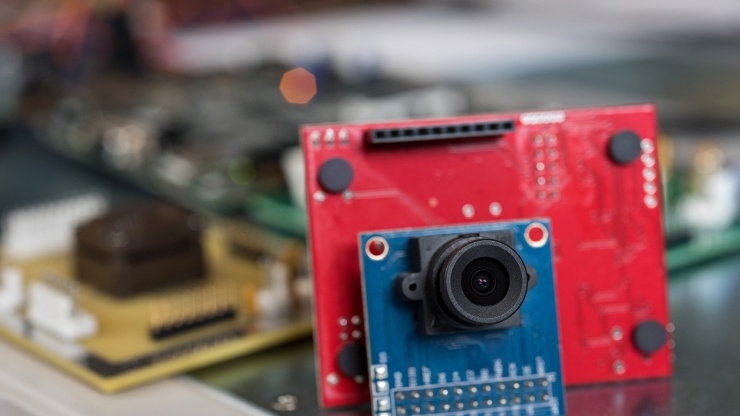
While there are ton of smart devices out there that will wake up with a simple voice command, researchers at the Georgia Institute of Technology have take the concept to a new level. The researchers have developed an always-on camera designed with a combination of low-power hardware and energy efficient image processing software. The camera can watch for specific gestures to signal it to get to work, without draining batteries or running up electricity bills.

“Right now cameras are very hard to run on passive power just because they burn so much power themselves,” said Justin Romberg, a professor in Georgia Tech’s School of Electrical and Computer Engineering. “This combination of efficient signal processing and a novel hardware design lowers the power requirement and means that some of these other options to power it might be open.”
To create the camera’s low-power capabilities the researchers needed to reduce its frame rate, as well as program the camera to track motion in a more generalized way, allowing it to still preserved crucial details about what was being tracked. Doing so requires much less processing power than tracking individual pixels throughout the entire field of view.
“What this camera is actually looking at is not pixel values, but pixels added together in all different ways and a dramatically smaller number of measurements than if you had it in a standard mode,” said Romberg.
While the always-on camera was created as a way to wake up devices, its ability to recognize specific gestures expands the possibilities. For example, a camera that wakes up with a specific pattern or movement similar to a secret handshake.
“We wanted to devise a camera that was capturing images all of the time, and then once you have a particular gesture – like you write a Z in the air – it’s going to wake up,” said Arijit Raychowdhury, an associate professor in the School of Electrical and Computer Engineering. “To make that work without affecting the battery life, we wanted it to be so low power that you can power it with harvested ambient energy, such as with a photovoltaic cell.”
This programming to recognize specific gestures and wake up only when needed is a vital component to conserving the total system energy.
“Simple motion detection is a well-studied area of research, and there are commercial products that support motion detection,” said Raychowdhury. “But the problem is that a camera that can just detect motion – and not specific patterns in motion or gestures – is going to wake up more often, even when it doesn’t need to.”
A low-power camera like this could be used in a variety of applications, including camera systems in remote areas where power efficiency is of the utmost importance.
Other applications include specialized surveillance, robotics and consumer electronics. The researchers are currently working to add wireless functionality to transmit images and data with an antenna.
“Cameras are being added to more and more devices these days, but they don’t have much interactivity,” said Raychowdury. “What we are studying are smart cameras that can look at something specific in the environment at extreme energy-efficiencies and process the data for us.”
Story via Georgia Institute of Technology.

Comments are closed, but trackbacks and pingbacks are open.